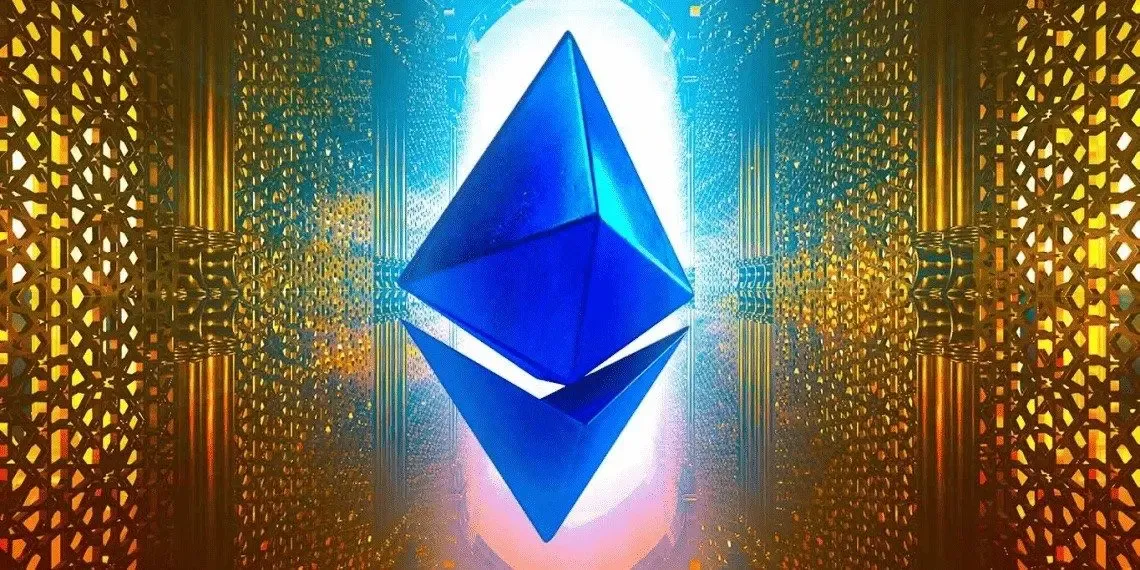The NFT market has cooled down, and NFTFi is struggling to operate
Author: Kyle, Bengal Tech
The leading NFT lending protocol BendDAO has recently fallen into a liquidity crisis. Over the past week, a large amount of ETH deposits have been withdrawn. As of 4 PM on August 23, the lending utilization rate of the protocol reached 99.26%, with available liquidity only at 90.03 ETH. This means that the vast majority of ETH depositors cannot immediately withdraw their assets from the protocol.
As the first NFT liquidity protocol based on "decentralized peer-to-pool," BendDAO currently provides a collateral lending market for seven major blue-chip NFT series, including Bored Ape Yacht Club (BAYC) and CryptoPunks, allowing depositors to earn interest by depositing ETH.
However, as the NFT market cools down, depositors in BendDAO have found that when NFT collateral triggers liquidation, due to insufficient market liquidity, the collateral is difficult to sell immediately to repay loans, significantly increasing the risk of bad debts, leading to a large-scale bank run.
In any financial market, liquidity is usually the foundation for financial applications to function effectively, but in the illiquid NFT market, quick transactions and simple lending are difficult to achieve, posing challenges to the healthy operation of NFTFi applications.
BendDAO Faces Liquidity Crisis
With the arrival of the "NFT bear market," the leading NFT lending protocol BendDAO is experiencing a liquidity crisis.
This crisis began to emerge in mid-August. Between August 14 and 19, BendDAO liquidated more than 10 blue-chip NFTs used as collateral for loans in ETH. As the liquidation of the Bored Ape Yacht Club (BAYC) began, the internal economic system of BendDAO experienced a domino effect collapse.
On August 19, the floor price of BAYC fell below 70 ETH, and BendDAO began its first liquidation of Bored Apes. Soon, users who had staked ETH in BendDAO to earn interest realized that the situation was spiraling out of control.
Before delving deeper into this liquidity crisis, it is essential to understand how BendDAO operates.
As the first NFT liquidity protocol based on "decentralized peer-to-pool," BendDAO provides a liquidity market for blue-chip NFT collateral lending. Depositors can earn interest by providing liquidity in ETH to the loan pool, while borrowers can use specific types of blue-chip NFTs as collateral to borrow ETH from the loan pool.
Given that the liquidity of NFTs cannot be compared to fungible tokens, BendDAO has only supported seven blue-chip NFT series, including BAYC, CryptoPunks, and Azuki, as collateral for lending to prevent bad debts due to insufficient market liquidity. Additionally, users can only borrow ETH worth up to 40% of the current floor price of the NFT they collateralize.

BendDAO currently supports collateral lending for 7 blue-chip NFT series
According to the liquidation rules, when the loan amount / collateral floor price reaches 90%, liquidation is triggered, and BendDAO will list the collateralized NFT on the auction market. Considering the high volatility of the NFT market, even when entering the liquidation auction phase, holders can still repay the loan within 48 hours. However, if the floor price of the NFT falls below the threshold and no one purchases it, BendDAO and the lenders will ultimately bear the debt.
From a mechanism perspective, BendDAO has already fully considered the volatility and liquidity risks of the NFT market since its inception. However, the decline in blue-chip NFT prices has still exceeded BendDAO's expectations.
According to data from NFTGo, in the past three months, the floor price of BAYC has dropped from a high of 98 ETH to 66.9 ETH, a decrease of 31.7%; the floor price of CryptoPunks has fallen from a high of 84 ETH to 66 ETH, a decrease of 21.4%.
As prices continue to decline, NFTs have been entering the liquidation process, which has high liquidity requirements. Soon, it became apparent that when an NFT triggers liquidation and is listed on the auction market, there are not many participants willing to bid, significantly exacerbating the risk of bad debts.
As a result, users with ETH deposits in BendDAO began to withdraw their funds, leading to a bank run. On August 21, Umbra Labs co-founder 0xTIGΞR tweeted that within 30 minutes starting from 15:52 Beijing time on August 20, 9,640 ETH was withdrawn from BendDAO, exceeding 35% of all ETH deposited on the platform.
As of 4 PM on August 23, the total ETH deposited in BendDAO was 12,181.54 ETH, while a total of 12,091.51 ETH had been borrowed, resulting in a lending utilization rate of 99.26%, with available liquidity only at 90.03 ETH. This means that the vast majority of ETH depositors cannot immediately withdraw ETH from the protocol; they can only wait for NFT collateralizers to actively repay loans to release liquidity or for the NFTs in auction to be successfully liquidated.
Insufficient Liquidity Makes NFTFi Applications Difficult to Operate
As a representative protocol of NFTFi, BendDAO's current liquidity crisis severely undermines confidence in NFT-derived financial products within the industry. People are beginning to realize that in the NFT trading market, the most frightening thing is not a price crash, but the collapse of liquidity.
From BendDAO's mechanism, it mimics mainstream DeFi lending protocols like Aave, where users over-collateralize assets to borrow other assets. When the value of the collateral falls below a certain threshold, liquidation is triggered, and the protocol automatically sells the collateral to repay the loan.
However, this business logic that works in DeFi has failed in NFTFi. Since NFTs cannot be sold immediately in the market like fungible tokens, in a market environment with poor liquidity, "liquidation" becomes a false proposition. If the external market outlook for NFT collateral is pessimistic, it is very likely that no one will take over the collateral, leading to the collateral being stuck with the protocol and the lenders.
Meanwhile, BendDAO's mechanism further reduces the market's willingness to take over collateral.
According to BendDAO's mechanism, participants in the auction must lock their ETH for 48 hours, and the auction bid must be greater than 95% of the NFT floor price. This means that even if the auction is successful, participants may only have a maximum profit margin of 5%. The premise for obtaining this 5% profit is that the NFT can be immediately sold at the current floor price after the auction is completed. However, since most of the blue-chip NFTs supported for collateral in BendDAO are expensive, most retail investors cannot afford to participate, resulting in inherently low liquidity.
Additionally, in the context of ETH's own volatility, the requirement for BendDAO to lock ETH for 48 hours may also cause hesitation among bidders. After all, no one can predict the price movement of ETH during the lock-up period.
To escape the current predicament, BendDAO released a new proposal on August 22, suggesting gradually lowering the liquidation threshold from 90% to 70%, adjusting the auction cycle from 48 hours to 4 hours, and removing the restriction that "the first bid must be higher than 95% of the floor price." As of 5 PM on August 23, this proposal had received a support rate of 97.13% and is likely to be passed.

BendDAO initiates a proposal to modify protocol parameters
BendDAO's adjustment of rules attempts to give the market more room for liquidation. However, the problem is that for NFT collateralizers, adjusting the liquidation threshold to 70% significantly increases the risk of liquidation. Some community members believe that while this proposal may boost depositor confidence, it could also lead to more NFTs being hastily liquidated.
This difficult-to-balance proposal is a microcosm of the awkward situation facing NFTFi today. In any financial market, liquidity is usually the foundation for financial applications to function effectively, but in the illiquid NFT market, achieving quick transactions and simple lending is extremely challenging.
Twitter user "CryptoXavierLee" analyzed that in 2021, it was common for the trading volume of a particular NFT project to exceed its total market value, which was a sign of healthy market data. However, in the second half of this year, while the market value of NFTs seems higher than in 2021, liquidity is lower compared to the same period. "The seemingly prosperous high market value essentially stems from the oversaturation of NFT issuance, but the market does not have enough liquidity to support it."
Currently, there are still no signs of improvement in the NFT market. According to data from Dune Analytics, the monthly transaction volume of NFTs on the Ethereum chain on the OpenSea platform has sharply decreased from $4.857 billion in January to $528 million in July. From early August to now, this figure is only $368 million, almost returning to the levels seen when NFTs first emerged.
In stark contrast to the sharply reduced trading volume, according to NFTScan data from August 20, nearly 1.9797 million new NFT assets were added to the Ethereum network in the past week, with an average of 282,800 new NFT assets minted daily.
As the number of NFTs increases, trading volume decreases, indicating a supply-demand imbalance in the market. The hype around NFTs is cooling down, and people are no longer willing to spend large sums of money on "pictures." When liquidity is scarce, NFTFi also loses its application foundation.











